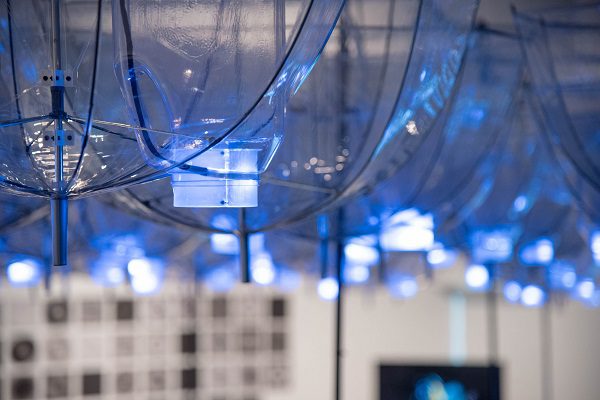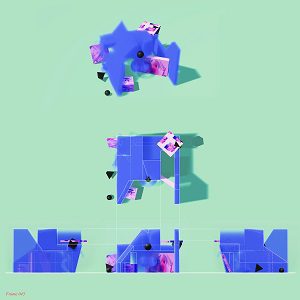Professor Wins Competition to Author Next “Pamphlet Architecture”

Assistant Professor of Architecture Catty Dan Zhang has won first prize in the Pamphlet Architecture competition, an international competition that will award Zhang a $5,500 honorarium to develop her proposal and the opportunity to produce the next book in the Pamphlet Architecture series.
Founded in 1978, Pamphlet Architecture is one of the most prestigious architecture publications in the U.S. Over its 35-year history, the series has featured cutting-edge designs and theories by some of the discipline’s most renowned and distinctive voices, including Zaha Hadid, Lebbeus Woods, and Pamphlet founder, Steven Holl. Zhang’s work will comprise Pamphlet Architecture 37.
The theme for this year’s competition, “Visions and Experiments in Architecture,” challenged participants to “look into the future while preserving the landscape… imagine new light, air, and spatial energy… design new architecture for a new consciousness.” Zhang’s proposal, “Active Atmospheres: On Instruments and Protocols for Medium Hybrids and Architectural Voids,” builds upon her investigations of invisible and intangible “materials” – such as air or digital data – in the built environment.
Well before the pandemic alerted people to the significance of airflow in a classroom, office suite, or grocery store, Zhang was studying air as an important and active system to be foregrounded in the design process. Previous projects, such as VENTS (2018, pictured above), FANS (2017), Medium Matters (2016), and MASKS (2015), translated the ephemeral into the sensory, making airflow both visible and tangible in artistic multimedia installations. That work won the 2019 University of California Berkeley College of Environmental Design “Emerging Designers” competition, resulting in an exhibition, The Moving Air: A Cultural-environmental Paradigm in early 2020. Those experiments will form one category, “Moving Air Systems,” that Zhang presents in Pamphlet 37.
Just weeks after the Berkeley exhibition closed, COVID-19 radically altered life around the globe and created the “new consciousness” that the Pamphlet Architecture competition acknowledged. Suddenly everyone was considering airflow and its potential to carry the infectious virus, especially in indoor settings.
One space type in particular intrigued Zhang: meat-processing plants, which, she notes “became hot-spots” for disease transmission. In a fourth-year architecture studio in Fall 2020 and in continuing research supported by a Faculty Research Grant, she has experimented with simulation tools to track and demonstrate how the movements of laborers and machines shape the movements of particles in the large, open facilities. Her visually arresting computational prototypes, image sequences, and diagrams will comprise another pamphlet section, “Particulates Along Motion Axes” and contribute to current discussions of automation and health and wellness among workers.
 The third category of experiments that Zhang will present in her publication, “Video Captures and Screen Shares,” was also prompted by the pandemic and, she says, “the pivot to remote in our daily lives in the past two years.” Webcams and computer screens have become a constant feature of the home and work environments, as much of daily life is carried out through Zoom and other like platforms. And as we conduct our social interactions “virtually,” we can be “present” in many places at once. How does the exchange of data and images through virtual platforms affect design and our perception of space? How can the digital transmission, between the camera and the person and the computer screen, be thought of as “atmosphere,” or even more radically, as “architecture”?
The third category of experiments that Zhang will present in her publication, “Video Captures and Screen Shares,” was also prompted by the pandemic and, she says, “the pivot to remote in our daily lives in the past two years.” Webcams and computer screens have become a constant feature of the home and work environments, as much of daily life is carried out through Zoom and other like platforms. And as we conduct our social interactions “virtually,” we can be “present” in many places at once. How does the exchange of data and images through virtual platforms affect design and our perception of space? How can the digital transmission, between the camera and the person and the computer screen, be thought of as “atmosphere,” or even more radically, as “architecture”?
Pictured right, an image from “Webcams+”